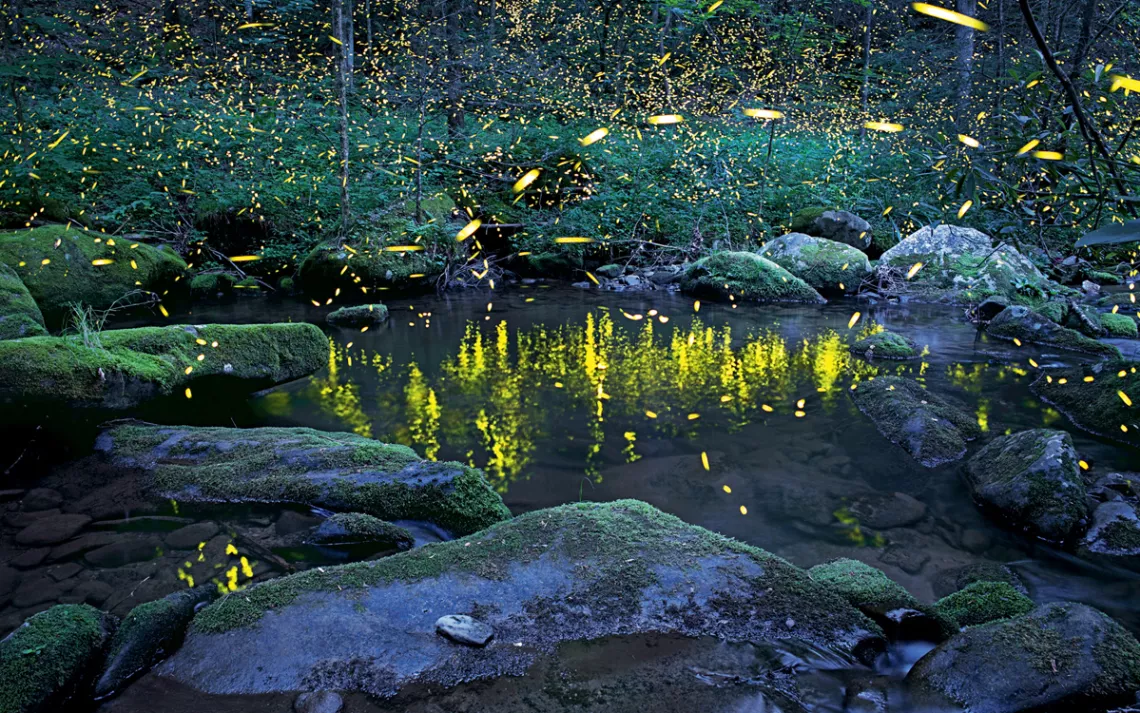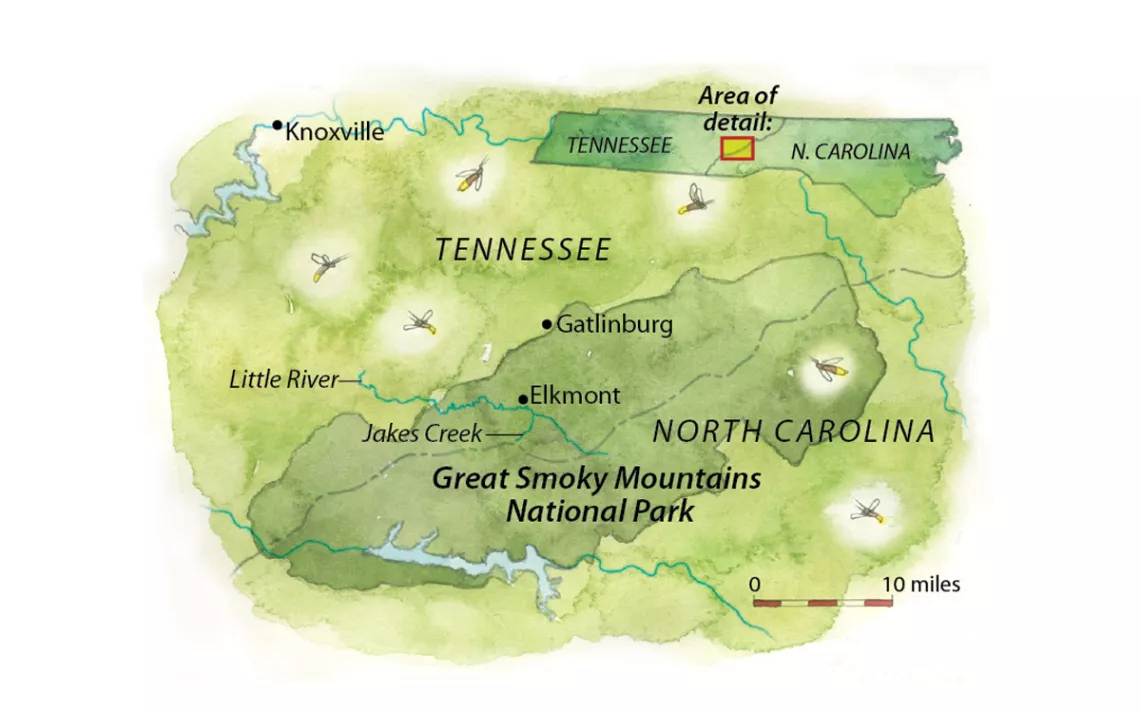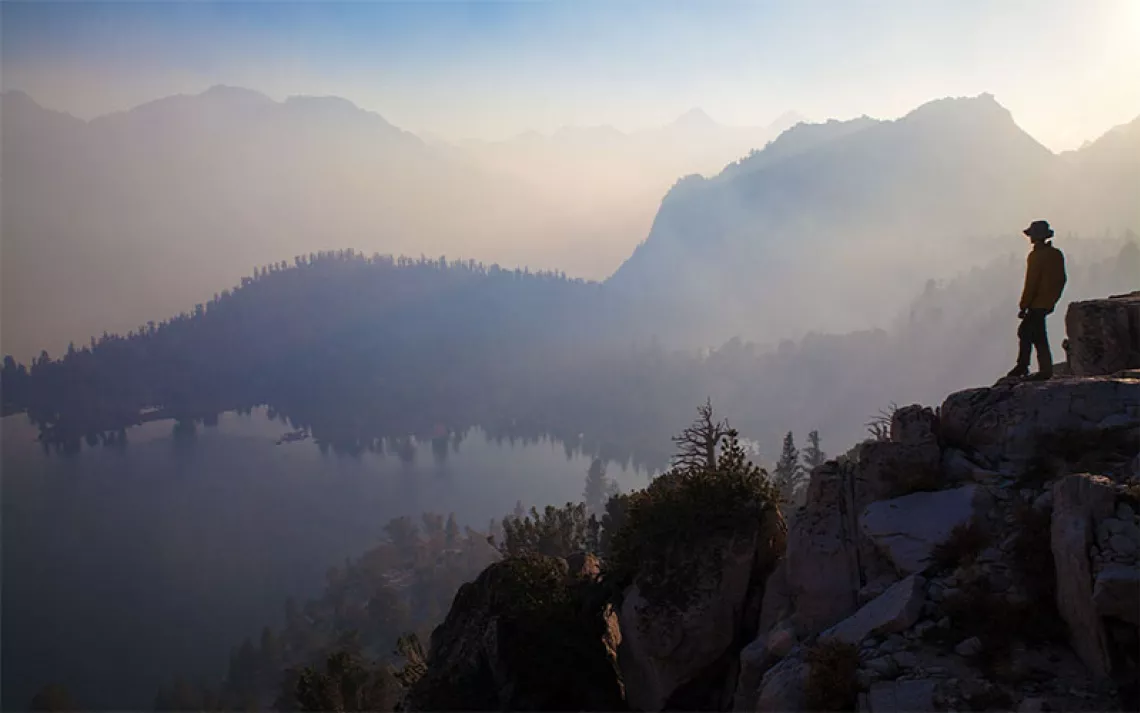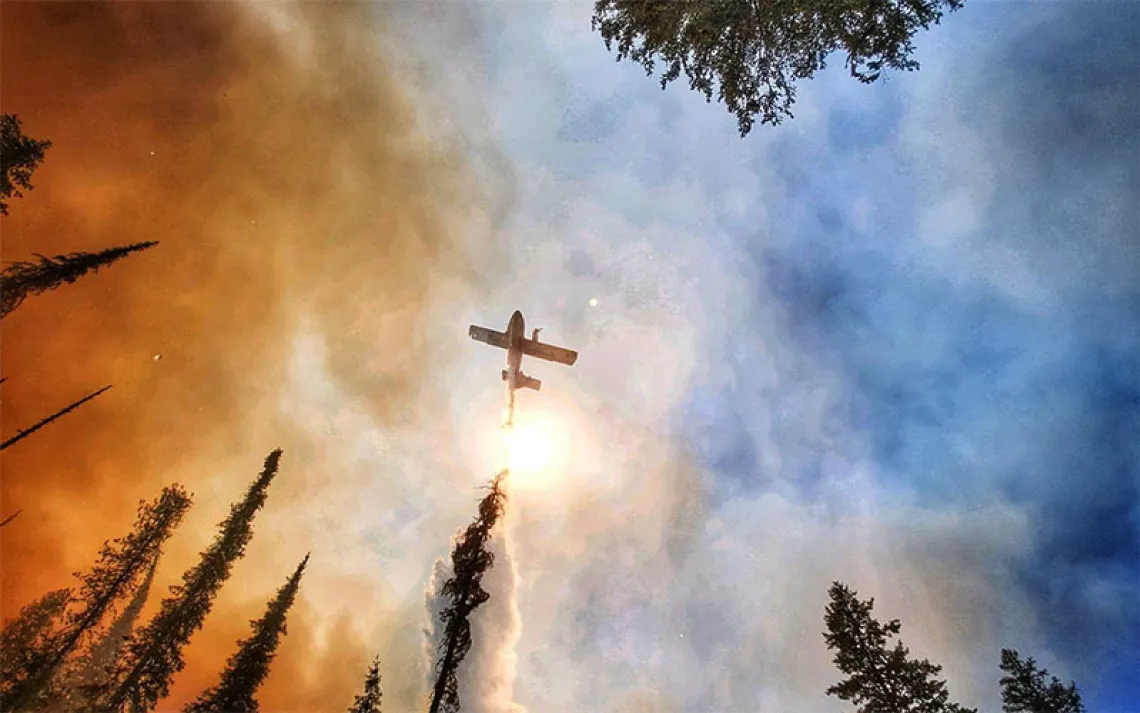Great Smoky Mountains National Park Is One of the Few Places to Watch Synchronous Fireflies
Tips on how you can experience this natural phenomenon

Synchronous fireflies in Tennessee's Great Smoky Mountains National Park | Photo by Radim Schreiber
As dusk deepened into inky darkness, the light show began. At first, it was just a few quick sparks. The flickers were deep in the woods, and I caught them out of the corner of my eye, not sure yet if they were real. Then the numbers grew and the spectacle became unmistakable: fireflies, hundreds of them, the pulsing of their tiny lanterns synced together perfectly. The flashing came in sets of six. Six blinks, then darkness. Another six and darkness again. Then the flashes were everywhere, and the Tennessee forest was filled with rhythmic bioluminescence. I felt myself begin to sway with the pattern of the lights.
Each year, in late spring, thousands of fireflies illuminate Great Smoky Mountains National Park along Little River and Jakes Creek in a dazzling, candescent mating ritual. The pulsating lights are an effort by the males to attract the females often located below in the thick forest duff. At least 19 species of fireflies inhabit the park, but only one—Photinus carolinus—is a synchronous firefly, meaning its males illuminate in unison. And synchronous fireflies exist in only a handful of places in the United States.
Like many people, I have fond childhood memories of chasing fireflies through the summer dark, trying to capture the glowing critters for bedside jam-jar lanterns. But the sight of synchronous fireflies is altogether different. If an ordinary firefly show is mesmerizing, a synchronous firefly show is enveloping.
One Memorial Day, I woke on the dark side of dawn and drove to rendezvous with Lynn Faust, a lifelong naturalist who has spent decades roaming the Great Smoky Mountains and is credited for having brought to the world's attention this colony of synchronous fireflies. Faust had the rare opportunity to grow up inside the national park. Her family had a cabin in the Elkmont district, a onetime logging town that, by the early 20th century, had become a weekend getaway for families from Knoxville, Tennessee. (In 1992, the park took ownership of the little town, and the last Elkmont families vacated their summer cabins.) Among Elkmont residents, the "Light Show" was a spring highlight, and Faust remembers watching it every year. But until she contacted researchers, the scientific community was unaware that a synchronous species existed in the Western Hemisphere.
News of the firefly orgy traveled fast, and what was once a peaceful woodland phenomenon now lures thousands of "fireflyers" to this pocket of the Smokies. Park administrators implemented a shuttle system in response, plus a lottery system for a limited number of passes for one of seven nights of firefly activity. Although the display becomes more spectacular at peak mating, veteran fireflyers and locals know that the fireflies are still impressive beforehand. If you don't nab one of the lottery slots, you can always come a day or two ahead of schedule. Which is exactly what I had done.

Map by Steve Stankiewicz
To my huge delight, Faust agreed to be my personal guide. That evening, she moved through the woods with the confidence of someone who knows the terrain intimately, and I struggled to keep up with her as she traveled deeper into the forest. (Flashlights and headlamps are discouraged for obvious reasons.) Behind us, I could hear spectators whispering. A hush then fell over the crowd, like that moment when the lights dim in a theater and the audience readies for the curtain's rise. Pitchy blackness swallowed us, and the show began. The luminous sparks of frenzied firefly flirtation slipped into sync.
Earlier, Faust had described for me how, as a child sitting on the screened-in porch of her family's cottage, she could watch light traveling down the mountain in waves. This sounded like poetic license. But as the tempo of the flashing picked up, I understood what she meant. As I watched the twinkling rise, crest, and fall from one side of the forest to the other, the sight reminded me of a mountain cascade, the scene more like a waterfall than anything entomological.
Sitting on the crumbling stoop of an Elkmont cabin, I was attempting, unsuccessfully, to capture the fireflies on video when the voice of an awestruck young woman emerged out of the darkness. "The thing with something like this is that you never know if it will ever happen again."
The woman was more right than she could have known. Since my firefly pilgrimage, much has changed in the Smokies. In the summer of 2016, eastern Tennessee saw one of the hottest, driest years on record. A drought, combined with arson-induced wildfires that swept from Chimney Tops mountain to the surrounding parkland, created uncertainty about the annual firefly phenomenon, even though Elkmont escaped the inferno. In those areas of the park that burned, did P. carolinus larvae dig underground in search of moisture and food? And if so, did they go deep enough to withstand high temperatures above ground?
With those questions still unanswered, the voice of that woman in the woods sticks with me. "It feels so fragile," I remember her saying. "I'm so glad I'm here seeing it now."
Join a Sierra Club Outings trip to the Great Smoky Mountains this fall. For details, see sierraclub.org/adventure-travel.
This article appeared in the July/August 2017 edition with the headline "Spectacle of Lights."
WHERE
The Little River and Jakes Creek Trails in Great Smoky Mountains National Park, Tennessee
GETTING THERE
Before—or after—the shuttle period, drive into the Elkmont campground to reach both trailheads. During the peak, park shuttles leave from the Sugarlands Visitor Center, just outside of Gatlinburg.
WHEN TO VISIT
Late May to early June, depending upon the fireflies' schedule. At the end of April, the National Park Service posts the dates of predicted peak activity. A couple of days after that, the lottery for vehicle passes opens.
PERMITS
To enter Elkmont during the park's official firefly-viewing dates, you'll need one of 1,800 parking passes distributed via lottery. Securing a campsite in Elkmont during firefly season also grants you access, though it books up months ahead of the park's announcement of peak dates.
SURVIVAL TIPS
Bring snacks and water. Boarding the shuttle at 7 P.M. and returning to the visitor center after 11 P.M. makes for a long evening excursion.
SUGGESTED READING
For a more enlightened experience, read Faust's new book, Fireflies, Glow-Worms, and Lightning Bugs (University of Georgia Press).
MUST SEE
A stroll through the Elkmont ghost town is like entering a time warp. The park plans to begin preservation work on 19 of the historic cabins.
MORE
nps.gov/grsm
 The Magazine of The Sierra Club
The Magazine of The Sierra Club



